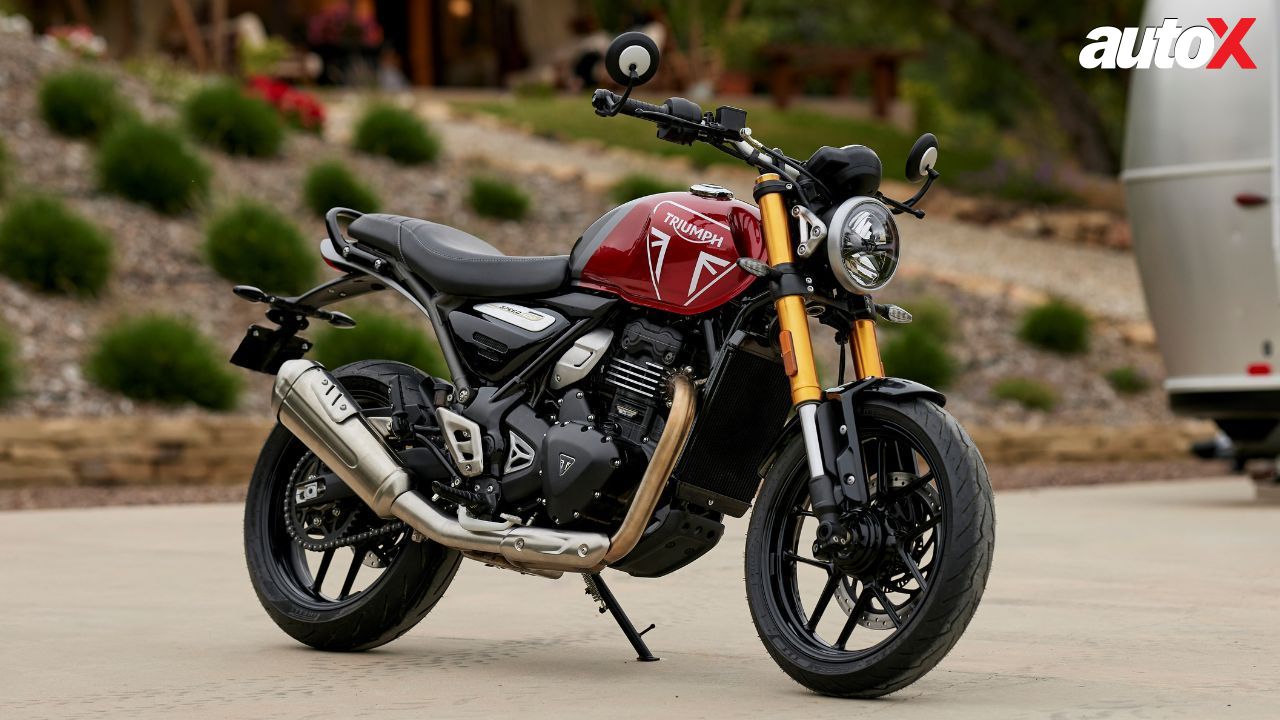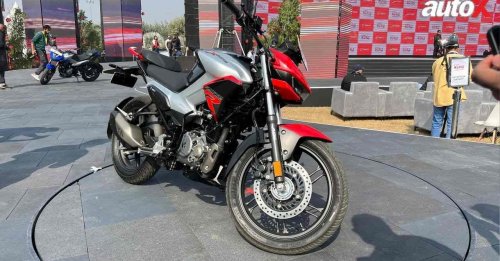
The Pulsar NS400Z is built as Bajaj's biggest and most powerful Pulsar in India, thanks to its 373cc, single-cylinder, liquid-cooled engine. Like the other Pulsar NS models in the lineup, the Bajaj Pulsar NS400Z gets a central LED projector headlight with thunderbolt-shaped LED daytime running lights, as well as an angular tail section and 17-inch alloy wheels. All this and more command an introductory price of Rs 1.85 lakh (ex-showroom). Currently, the newly launched Pulsar NS400Z sits in 'the most lucrative motorcycle segment', alongside the Triumph Speed 400, Husqvarna Svartpilen 401, and KTM 390 Duke. Here, we take a close look at how the Bajaj Pulsar NS400Z compares with its partner brand Triumph's Speed 400.
Similar to the Bajaj Pulsar NS400Z – which is positioned as a street bike – the Triumph Speed 400 (with a neo-retro design) features a round LED headlight, LED turn indicators, a step-up seat, a gold-plated upside-down fork, and sleek LED taillights. However, it does not get large tank extensions like the Pulsar NS400Z.
Also Read: Bajaj Pulsar NS400Z Launched in India at Rs 1.85 Lakh, Bookings Now Open
Bajaj Pulsar NS400Z vs Triumph Speed 400: Features
With the Bajaj Pulsar NS400Z, you get a digital instrument console with Bluetooth connectivity and turn-by-turn navigation, as well as all-LED lighting, dual-channel ABS (anti-lock braking system), switchable traction control, ride-by-wire, and four ride modes (Sport, Road, Rain, Offroad). Almost all of these features are available with the Triumph Speed 400, save for the ride modes and a digital dash. Instead, it sports a semi-digital instrument cluster housing a large analogue speedometer and an LCD screen.
Bajaj Pulsar NS400Z vs Triumph Speed 400: Engine, Output
Powering the Bajaj Pulsar NS400Z is the same 373cc, single-cylinder, liquid-cooled engine as the Dominar 400, whereas the Triumph Speed 400 is powered by a bigger displacement 398.15cc, single-cylinder, liquid-cooled engine. Output-wise, both engines make the same power – 39.4bhp. However, the 398cc engine (37.5Nm) develops more torque than the 373cc unit (35Nm). A six-speed gearbox accompanied by a slipper and assist clutch system aid in the transmission duties of both models.
Bajaj Pulsar NS400Z vs Triumph Speed 400: Suspension, Brakes
The suspension setup on both bikes consists of a 43mm upside-down fork and a preload-adjustable monoshock. But, the braking setup on the Pulsar NS400Z is a little different than the other bike – a combination of 320mm front/230mm rear versus the Triumph Speed 400's 300mm front/230mm rear. Both bikes roll on 17-inch alloy wheels, but tyre sizes vary with the Speed 400 featuring 110/70 front and 150/60 rear tyres and the Pulsar NS400Z 110/70 front and 140/70 rear tyres.
Also Read: Bajaj Pulsar NS400Z vs TVS Apache RTR 310 Spec Comparison: Which One Should You Buy?
Bajaj Pulsar NS400Z vs Triumph Speed 400: Price
Price-wise, the Bajaj Pulsar NS400Z sets you back by Rs 1.85 lakh (introductory, ex-showroom). Meanwhile, the Triumph Speed 400 costs Rs 2,34,497, post the price hike. Both prices are ex-showroom.
























Write your Comment